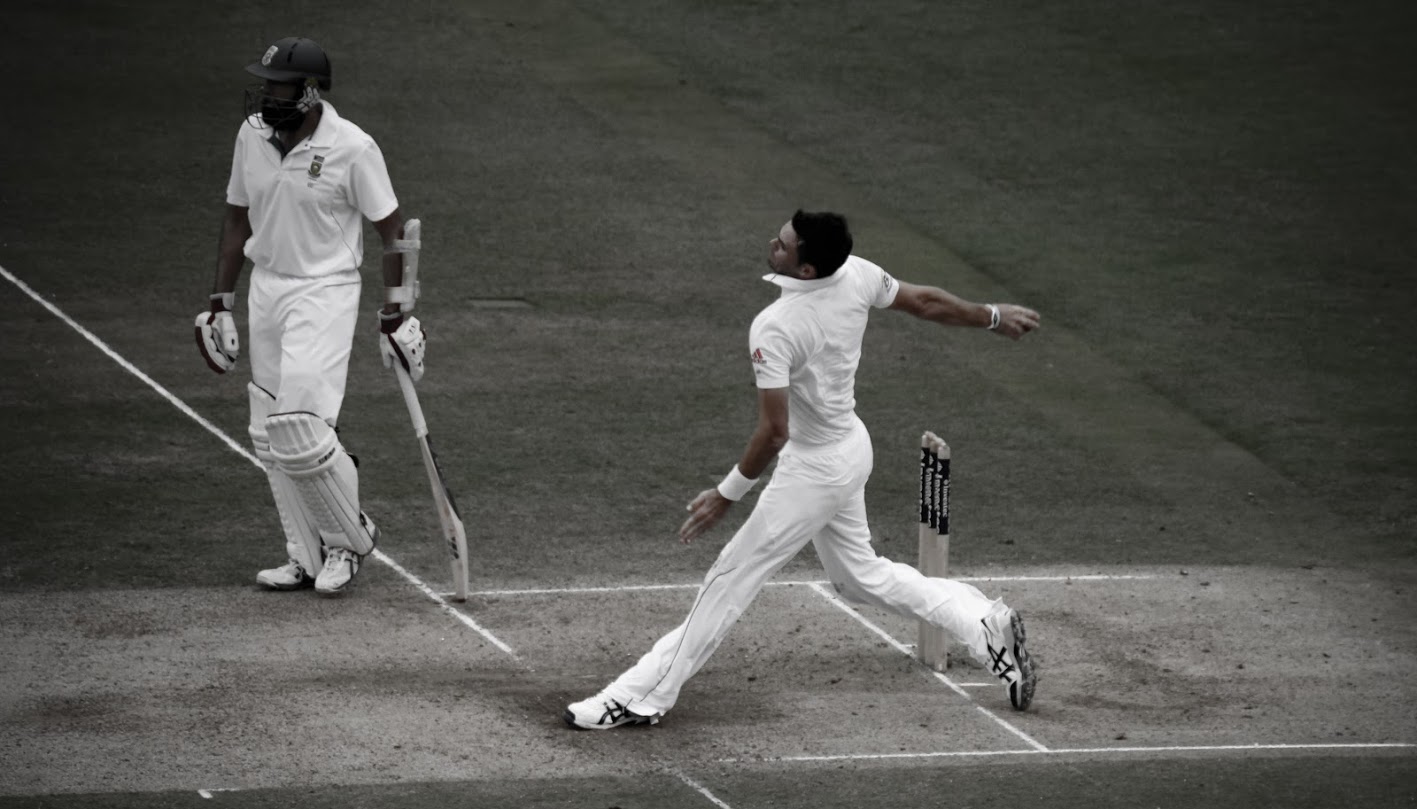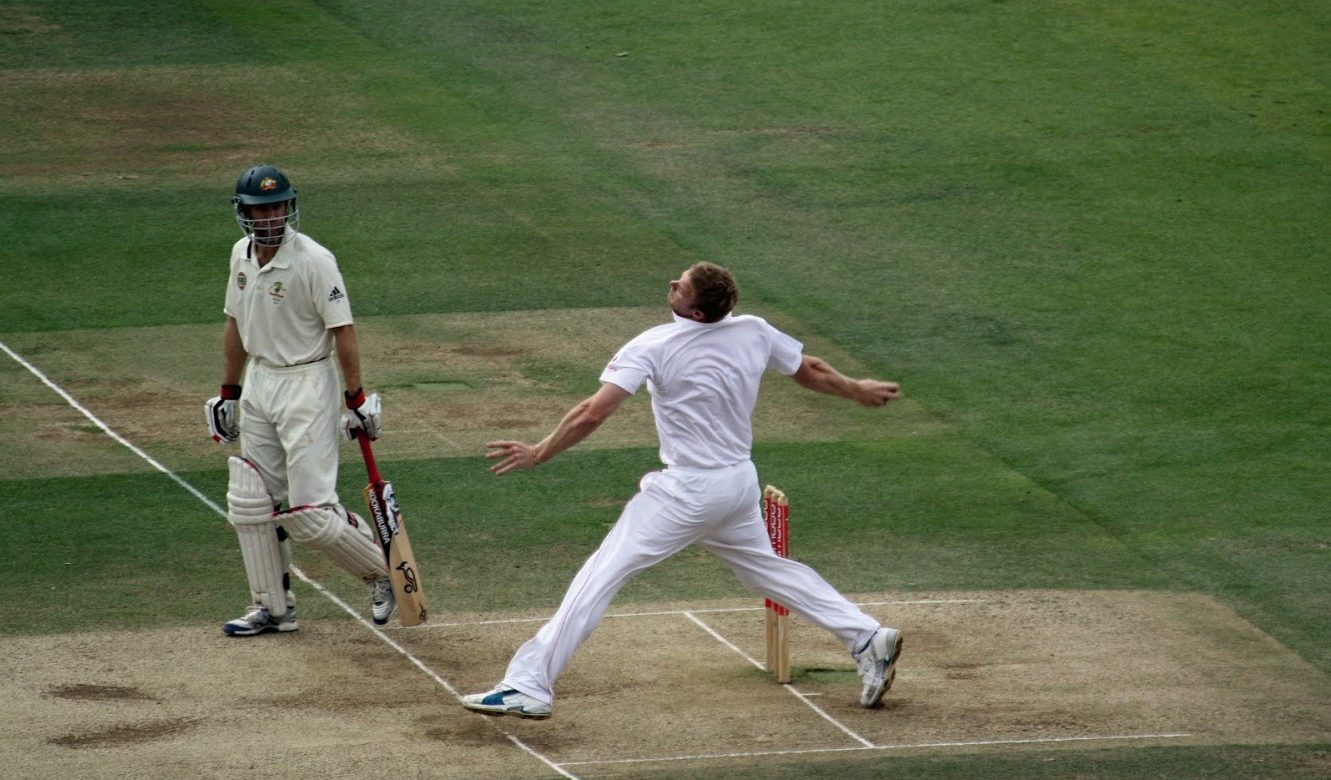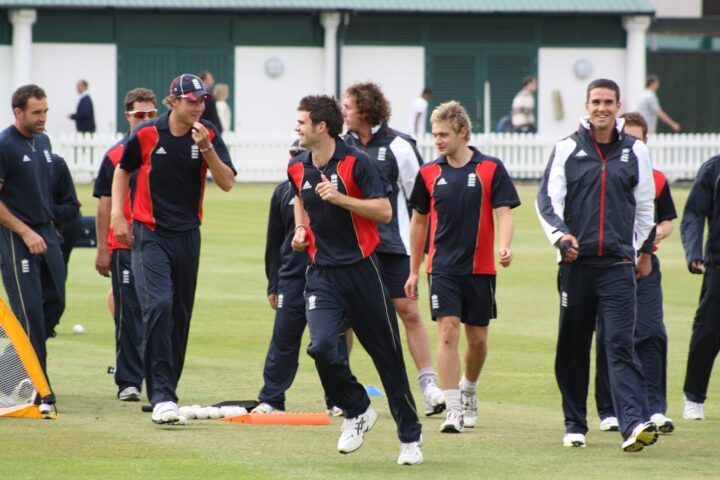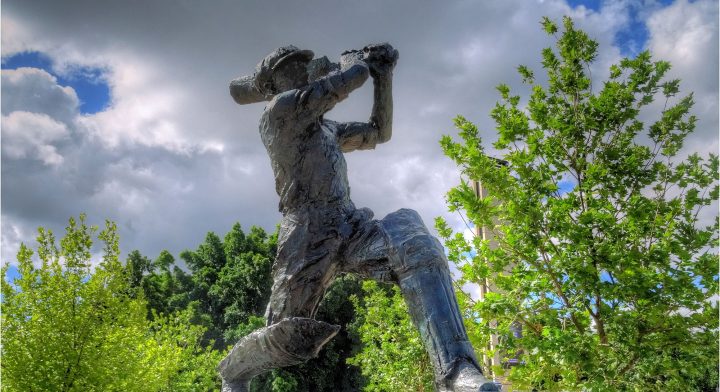Today we welcome back Haroon Khalid to TFT. Take a trip down memory lane as the first test at Edgbaston gets underway …
The 2005 Ashes series is often spoken of as the greatest Ashes series of all time and with much justification. 1-0 down after the first test, England came back with a nerve jangling 2 run win at Edgbaston after the heroics of Andrew Flintoff with both bat and ball. Drawing a match they would have won had it not been for inclement weather at Manchester, England prevailed – not without a scare – at Nottingham, before a blistering 158 not out by Pietersen at the Oval secured a draw and the first Ashes win at home since 1985.
However, for me the 1981 series, will always trump 2005. The unfolding drama captivated not only the cricket watching public but the nation.
The previous year, Mike Brearley, described as “the squeezer of green and gold pressure points”[1], stood down from the England captaincy after the post Packer 1979/80 tour to Australia. Based in part on his recommendation, the England selectors appointed Ian Botham, England’s best cricketer as captain. It would prove a baptism of fire for the 24 year old Somerset all-rounder. That year, the best team in the world bar none, the West Indies would arrive in England for a five match series followed by the Lord’s centenary test against an Australian team led by Greg Chappell.
A damp summer meant that there was only one positive result, a two wicket win in the first test at Trent Bridge for the West Indies. The winter would be spent on a five test trip of the Caribbean. This assignment was going to be hard enough on the field. The travails off the field would make life for the England captain even more trying. Poor practice facilities; a cancelled second test in Guyana because of the inclusion of Robin Jackman (a player who was plying his trade in the winter with Western Province in apartheid South Africa); the untimely passing of the much loved tour manager Ken Barrington in Barbados; as well as scrutiny on Botham’s own fitness all added to the England captain’s strain.[2]
For Australia, their immediate pre-Packer era, and subsequently reinstated, captain, Greg Chappell had decided he’d had enough of touring. He wanted to devote more time with his young family as well as concentrate on his business interests. In his place, the Australian selectors appointed the “establishment” Kim Hughes ahead of the arguably more cricket intelligent Rodney Marsh; although the latter was appointed vice captain. This would invariably lead to tensions between Hughes on the one hand and Marsh and Denis Lillee on the other.
The other notable tour absentees from the Australian squad included fast bowler Jeff Thomson, who spent 1981 with Middlesex before injury put paid to his summer, and perhaps bafflingly, batsman Doug Walters. Although not in the first flush of youth, and the possessor of an indifferent record in England, Walters had a solid 1980/81 in Australia. They could well have done with him at Headingly and Edgbaston and probably even at Old Trafford.
The One Day Internationals commenced on the 4th of June at Lord’s, with Australia prevailing to win the Prudential Trophy 2-1. There would be a two further first-class games against Derbyshire and Middlesex before the test matches started at Nottingham on 18th June.
Nothing will go right for that man[3]
Before the series started, the England selectors decided to appoint Botham on a test by test basis. Clearly this lack of confidence by the chairman of selectors, Alec Bedser et al, in the captain would be unsettling and so it proved at Trent Bridge. Botham’s struggles off the field didn’t help. Before the series, Botham appeared in court charged with assault (although he was acquitted).
In a low scoring game, where England even took a first innings lead, the hosts were terrible. In the Australian first innings, England dropped five catches including two by Botham. And when they batted, they succumbed in seamer friendly conditions to Lillee and his Western Australian colleague, debutant Terry Alderman, to take match figures of 8-80 and 9-130 respectively. Australia prevailed by four wickets on the 4th day.
Returns to Silence[4]
A damp and at times pedestrian second test, where both teams managed over rates of a little over 14 per hour, was drawn. On the final day, England set Australia 232 to win from about 50 overs. In the end, they managed 90-4 from 48.5. This was not before the England captain bagged an ignominious pair. After his first baller in the second innings, and as Botham trudged back to the pavilion, Lord’s was noiseless. The proverbial pin dropping could have been heard. On the BBC TV commentary, Tony Lewis remarked “Returns to silence”.
The strain on Botham was palpable and he cut a forlorn figure post-match. He tendered his resignation after not being given a guarantee that he would be appointed for the remainder of the series. Bedser subsequently said that although he had accepted Botham’s resignation, the captain would have been fired from his post regardless.
What now? A rudderless side, 1-0 down against an opponent with their tails up (ostensibly at least). How to come back from this? And the third test starting in less than a fortnight. The call went out to Brearley. Apparently, he had to accept a reverse charge since the call was being made from a payphone in a pub[5]. Bedser came on the line with an offer of the captaincy for the remainder of the series. Brearley duly accepted.
That’s gone straight into the confectionary stall and out again[6]
Although there were two changes from the second test (Brearley for Woolmer and Old for Emburey), two high profile selections caught the eye. Firstly, it is said that Brearley asked Botham, given the circumstances, if he wanted to play in the match. Incredulous, Botham retorted that of course he wanted to play. Maybe this was a brand of reverse psychology. Brearley duly predicted, perhaps in jest, that Botham would score a century and take a hatful of wickets.
The other change was the selection of Bob Willis. The Warwickshire captain, not initially picked for the squad at Leeds, was suffering from a surfeit of no balling and less than reliable fitness. Indeed, he was rested from Warwickshire’s trip to Surrey preceding the test match. However, Willis recalls that he needed to convince the England management that the reason for resting in Warwickshire’s championship match was so that he could be fit and able enough to participate at Leeds[7]. And how the two would perform!
Under a grey sky, and with the covers still on the ground, Hughes won the toss and elected to make first use of the Headingly pitch. In his retelling of the series, Brearley said “After the first day’s play, I almost wished I had not come back”.[8] And who could blame him? Australia were 203-3 from 82 overs with John Dyson having compiled a patient century.
On Day 2, Australia added a further 198 with half centuries from Hughes and Yallop as well as a decent contribution from Marsh. Hughes declared at 401 for 9. The England catching was still indifferent with chances being dropped, most notably off Hughes. More pertinently though, Botham took 6-96 from almost forty tireless overs. It is said, that Brearley dubbed him the “sidestep queen” and this clearly had the desired effect on Botham’s psyche.
On the Saturday, despite an almost run a ball fifty from Botham, England were all out by tea for 174. Hughes had no hesitation in enforcing the follow on and by the close when bad light had curtailed play, the hosts were 6-1. The latest odds were flashed up on the new electronic scoreboard on the Western Terrace. Australia were favourites at 4-1 on; a draw 5-2 against; on England, punters were offered 500-1 against. Marsh, cajoled by Lillee proceeded to place a bet on the hosts. The former £5, the latter a tenner. With the Sunday scheduled to be a rest day, both teams decamped to Botham’s country residence for a barbeque, with the mood relaxed.
Before returning to Headingly for the fourth day, the England team decided that it would be smart to check out of their Leeds hotel. After all, they were more than 200 behind on a pitch offering ample assistance to the skilful Australian seamers with only nine wickets in hand. And at 135-7 with only the tail to keep Botham company, it seemed a shrewd decision. By all accounts, when Dilley joined Botham for the eighth wicket, he told the Kent seamer that they should give it a go and see what would unfurl (or words to that effect). After all, it couldn’t get much worse.
What did unfurl, particularly after tea, was the most astonishing display of hitting by Botham and Dilley, although curiously, it was the latter who was the initial aggressor. The pair laid into the Australian bowling. This partnership certainly wasn’t aesthetic or particularly clinical, but it was mighty effective. Carnage ensued. In 80 frenetic minutes, either side of tea, the pair added 117 valuable runs and had thereby given England a slender lead. Cracks were appearing in the Australian camp and despite the overall situation, the bowlers started to lack discipline giving both Botham and Dilley too much width to play their shots.
After Dilley’s dismissal for 56, Chris Old, a useful batsman himself, joined Botham and proceeded to add 67 for the ninth wicket with the latter former hitting 29. During the partnership, Botham proceeded to launch Alderman for a straight six and thereby eliciting the famous BBC TV commentary from Richie Benaud “Don’t bother looking for that, let alone chasing it. That’s gone straight into the confectionary stall and out again”. By the close of play, England were 351-9 and 124 ahead. The team hastily rechecked backed into their hotel.
Only five were added to the total on the fifth morning before Willis was dismissed leaving Australia 130 to win. Botham finished on 149 not out from 148 balls out of a total of 356.
Although Botham had Wood caught by wicketkeeper Bob Taylor with the score on 13, Chappell and Dyson took the score to 56-1. Willis bowling from the Football Stand end, uphill and into the wind, was ineffective. Brearley eventually gave in to Willis and switched him to the Kirkstall Lane end.
Under instruction to bowl fast and straight, Willis now steamed in. Before lunch he took the wickets of Chappell with a brute of a delivery that he could only lob to Taylor whilst taking evasive action for 8, Hughes caught at slip by Botham (0) and Yallop, who played an ungainly shot, was well taken by Gatting at short leg (also 0). 58-4.
After lunch, the reliable Old induced an inside edge off Border’s bat which cannoned into his leg stump; 65-5, with the score displaying an unlikely symmetry – 65 to win with 5 wickets remaining; England started to believe. Willis was by now bowling like a man possessed. He then took the wickets of Dyson (caught by Taylor), Marsh (caught by Dilley) and Lawson (also caught by Taylor) by simply bowling aggressively and to plan. All the while the Warwickshire captain betrayed no emotion, even as the wickets tumbled.
At 75-8, Lillee joined Ray Bright and the pair added 35 in 22 feverish minutes. With the score on 110, Lillee chipped Willis to mid-on where Gatting, running in from a wider position, threw himself to scoop up the ball inches from the ground. Only then did Willis display any hint of emotion giving a fist pump and relived hug to Gatting. 110-8.
In his next over, with the score on 111-9, Willis proceeded to knock out Bright’s middle stump to secure the unlikeliest of victories by 18 runs. It was only the second time up to that point that a side had won a test match after following on.
Botham was named man of the match; although Willis ran him close in my opinion. And, after snatching victory from the jaws of defeat, and sparking the interest of a nation, how on earth could this match winning performance by England’s talismanic allrounder be topped?
Haroon Khalid
[1] Ryan C, 2010, Golden Boy: Kim Hughes and the bad old days of Australian Cricket, London, Allen & Unwin
[2] Woodcock, J., ed., 1982 Wisden Cricketers’ Almanack 1982, London, John Wisden & Co Ltd (Queen Ann Press)
[3] Richie Benaud – BBC TV cricket commentary 19 June 1981
[4] Tony Lewis – BBC TV cricket commentary 7 July 1981
[5] Hughes S, 2019, Cricket’s Greatest Rivalry: A History of the Ashes in 12 matches, 3rd edition, London, Cassell
[6] Richie Benaud – BBC TV cricket commentary 20 July 1981
[7] Erskine, J. (Producer, Director), & Gregory, V. (Producer). (2011). From The Ashes [Motion Picture]. United Kingdom: New Black Films
[8] Brearley M, 1982, Phoenix from the Ashes, London, Hodder and Stoughton Limited









Great stuff H. Oddly, I’m just reading Mike Brearley’s book at the moment. Willis was worried about overstepping even on the final day – but Brearley told him to forget about the no-balls and just bowl as fast as possible. Willis’ “trance-like” state during that spell has often been commented on over the years – “as if” he was on some kind of pharmaceutical enhancement…
The zone I think it’s called. Broad has done strange exploits as well in the same place. Bowlers can run through a side. Harmy did. And didn’t Jim Laker take all 10 wickets in the second innings and nine in the first in an Ashes Test in 1956? A record never surpassed?
Thanks Harmy.
Willis was automaton like during that spell; showing little hint of emotion – almost as if it was artificial intelligence before it became de rigueur.
Willis underwent hypnosis, though he was by no means averse to fun drugs.
Wonderful Haroon, brings back all my yesteryears!. I had just left school and was working on a farm that summer and that Monday was a rainy day in Hampshire and we were sent home as it was too wet to work in the fields. So I remember sitting down to watch BBC2 after lunch to watch the every ball as you have so expertly described.
Thanks Andy
Was at Edgbaston by default for Bothams five. Dad had two tickets but because his mate felt it would be a waste of time I got his ticket. It’s the most euphoric experience I’ve had a cricket match as the sheer force of will that Botham managed to communicate to players and crowd made you believe he could take a wicket every ball. What happened at the other end was just a breather from that main event. At no stage during that last hour or so did we have any doubt he was destined to win the match for us. I’ve never felt that certainty again watching any England side in an Ashes test.
Hi Marc,
I’ll be submitting part 2 of this 1981 recall before the second test where, Edgbaston, will be covered.
Cheers,
H
Dear Haroon,
As the co-author of a book about Headingley 1981 I can’t say I’m flattered that you appear not to have read it, but you’ve captured the improbability of it all splendidly. Your last sentence could so easily have been written after Stokes’s World Cup final performance, and again right now…and now a third successive man-of-the-match award beckons for Benny boy!
The parallels between 1981 and 2019, two horrendous summers for Britain, grow daily.
Bestest